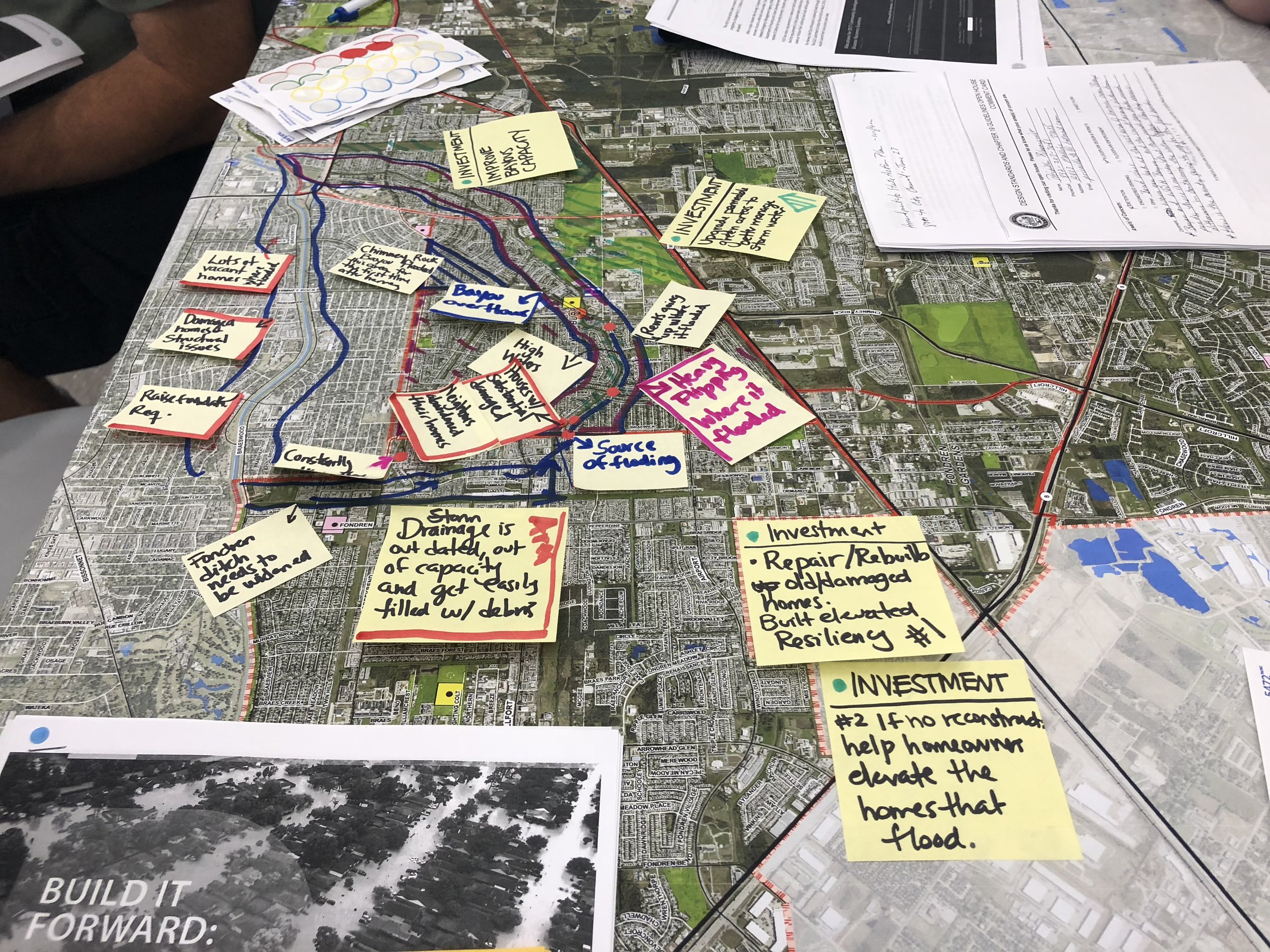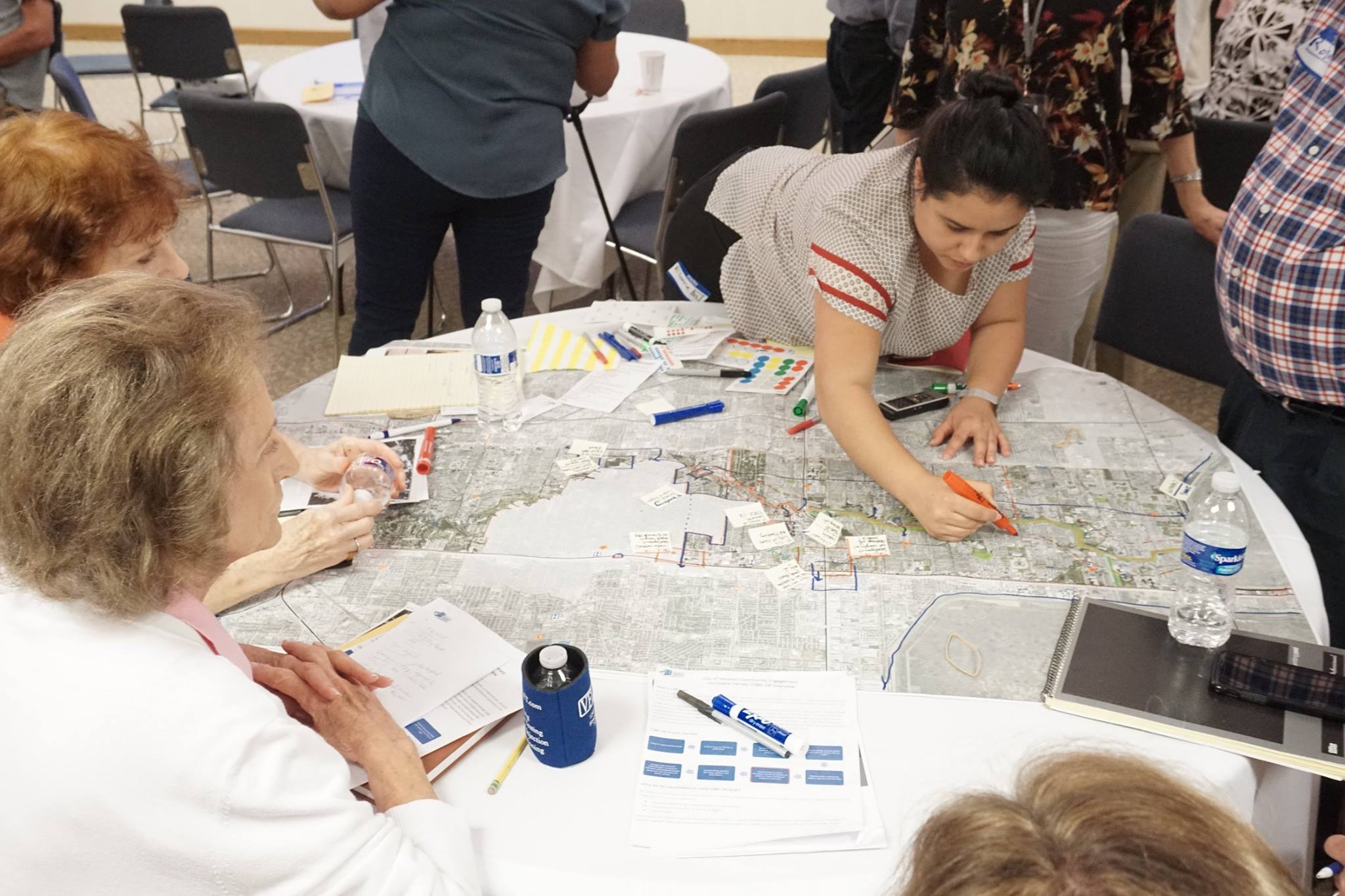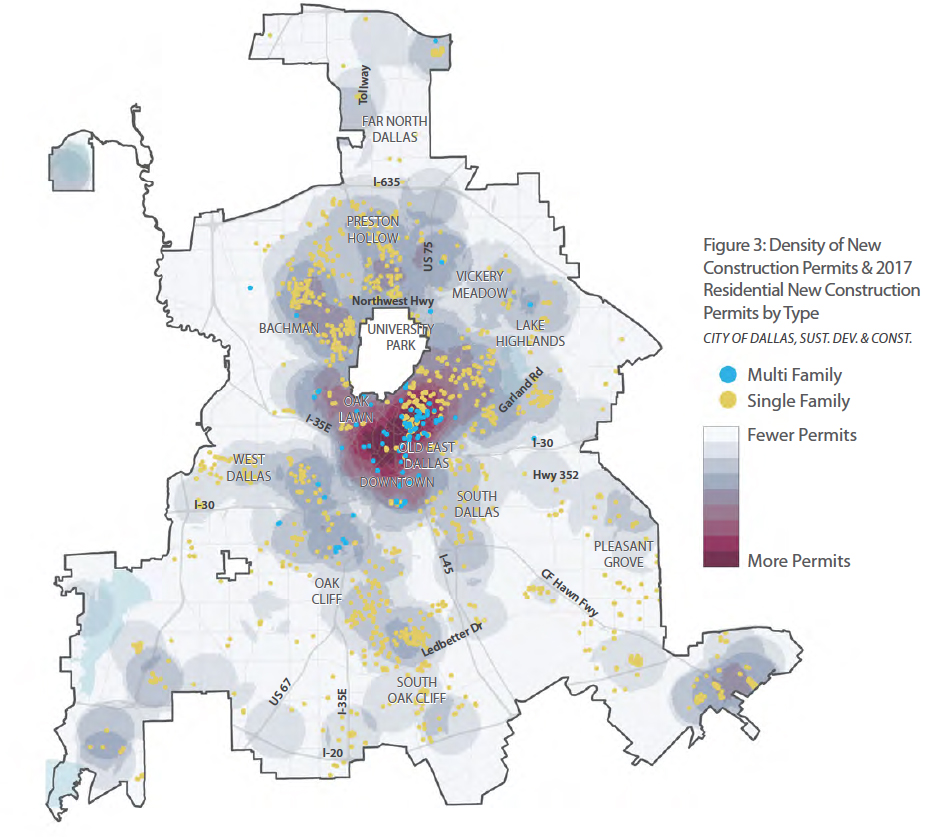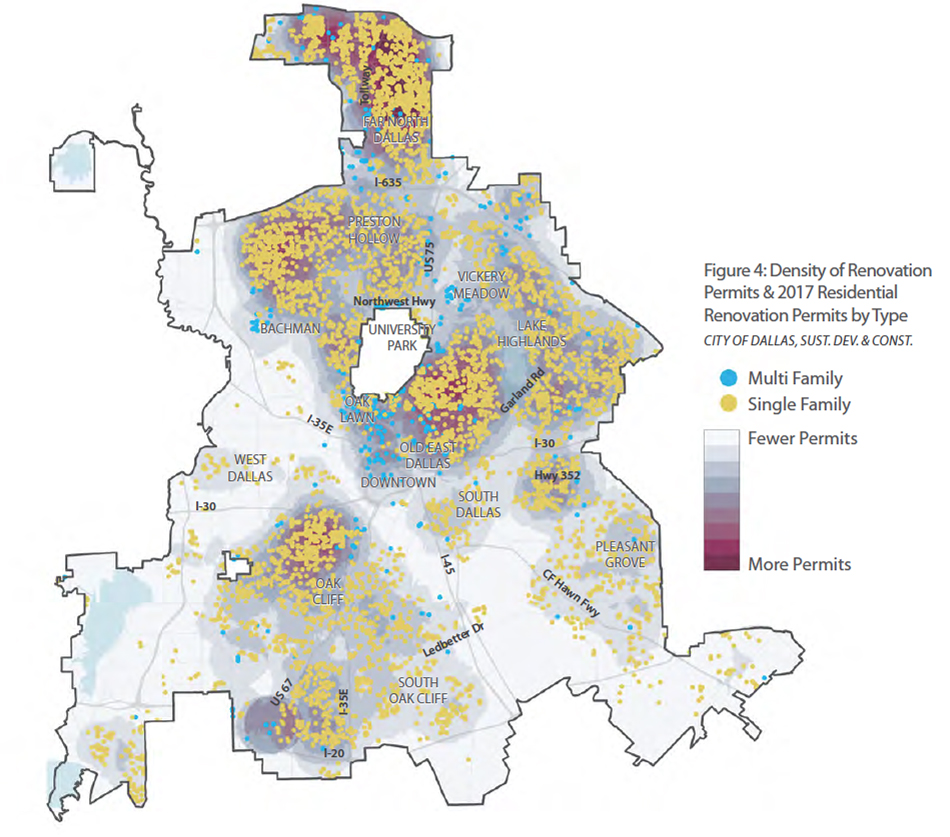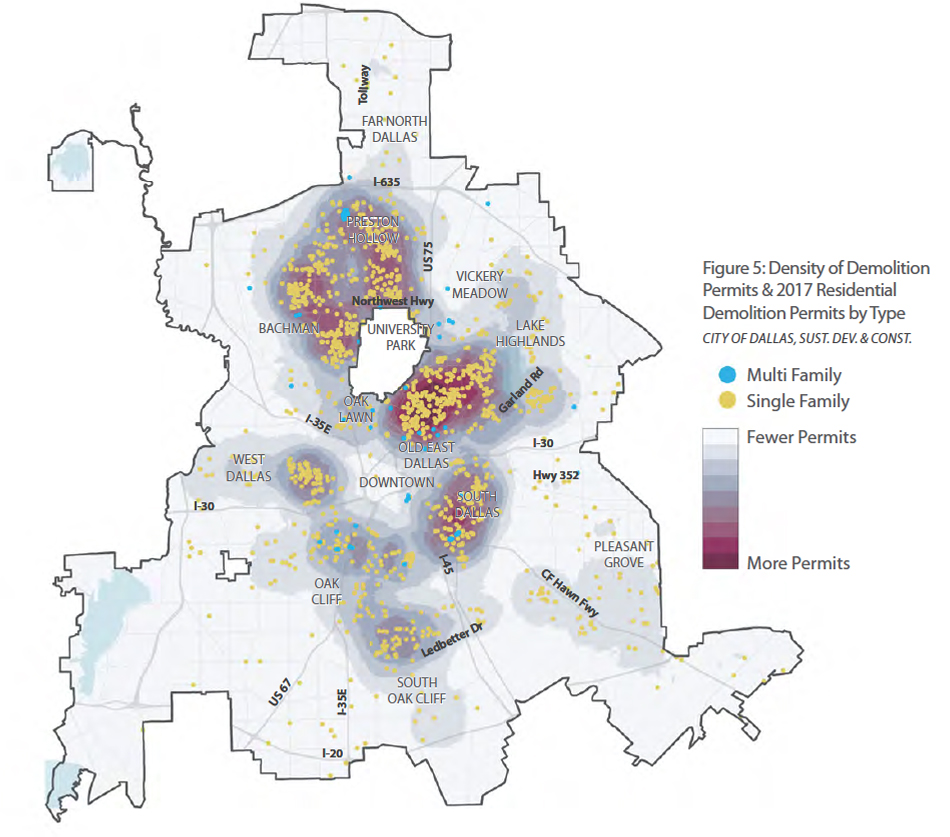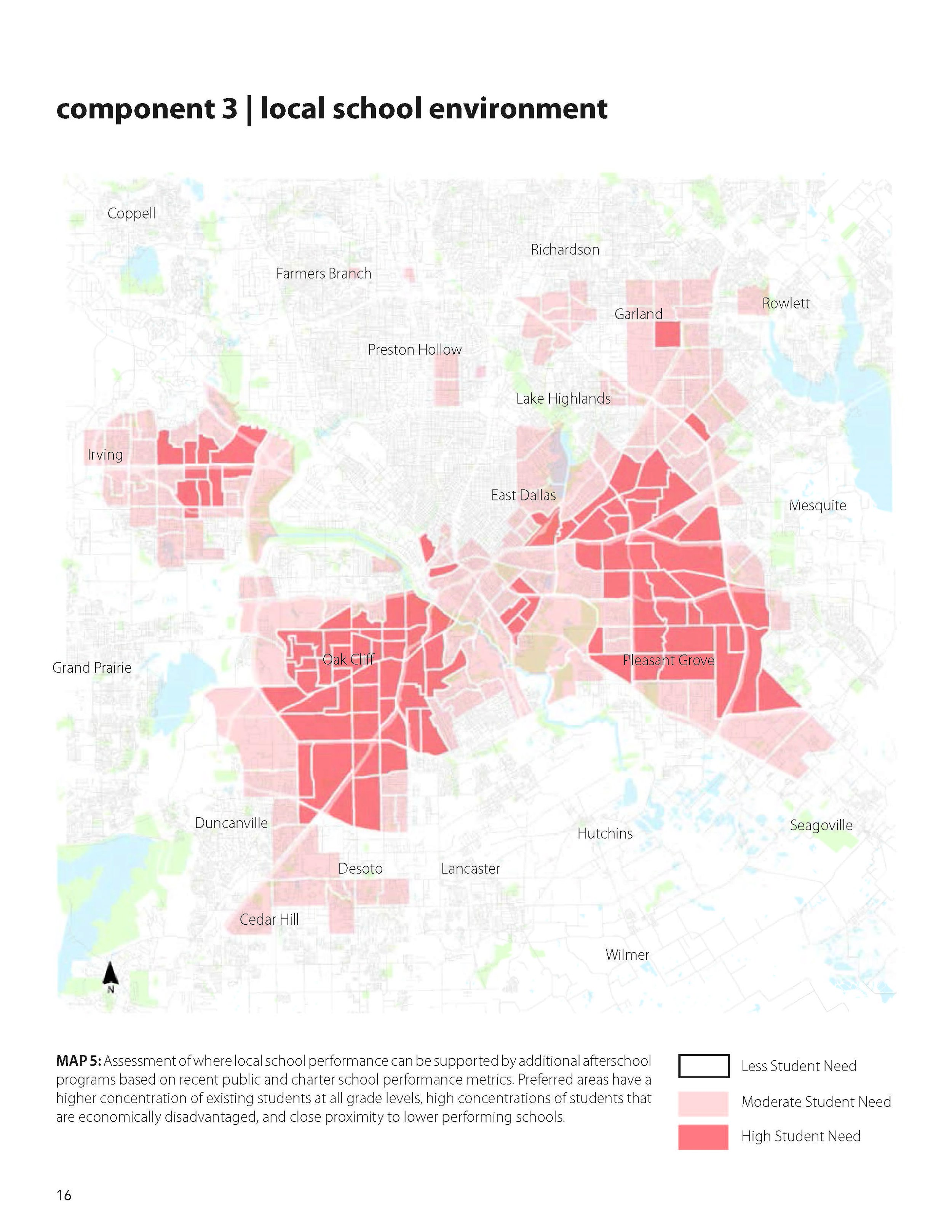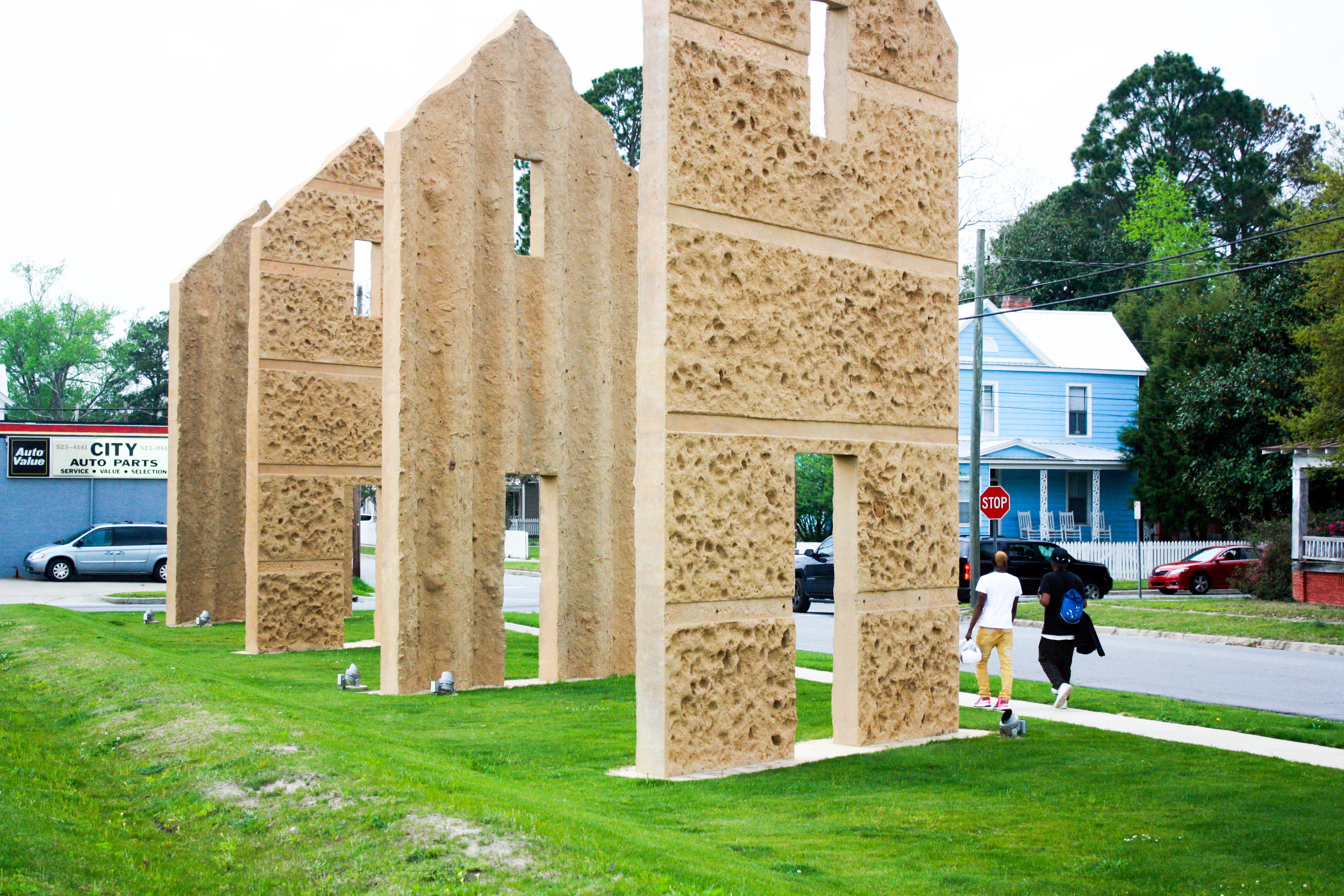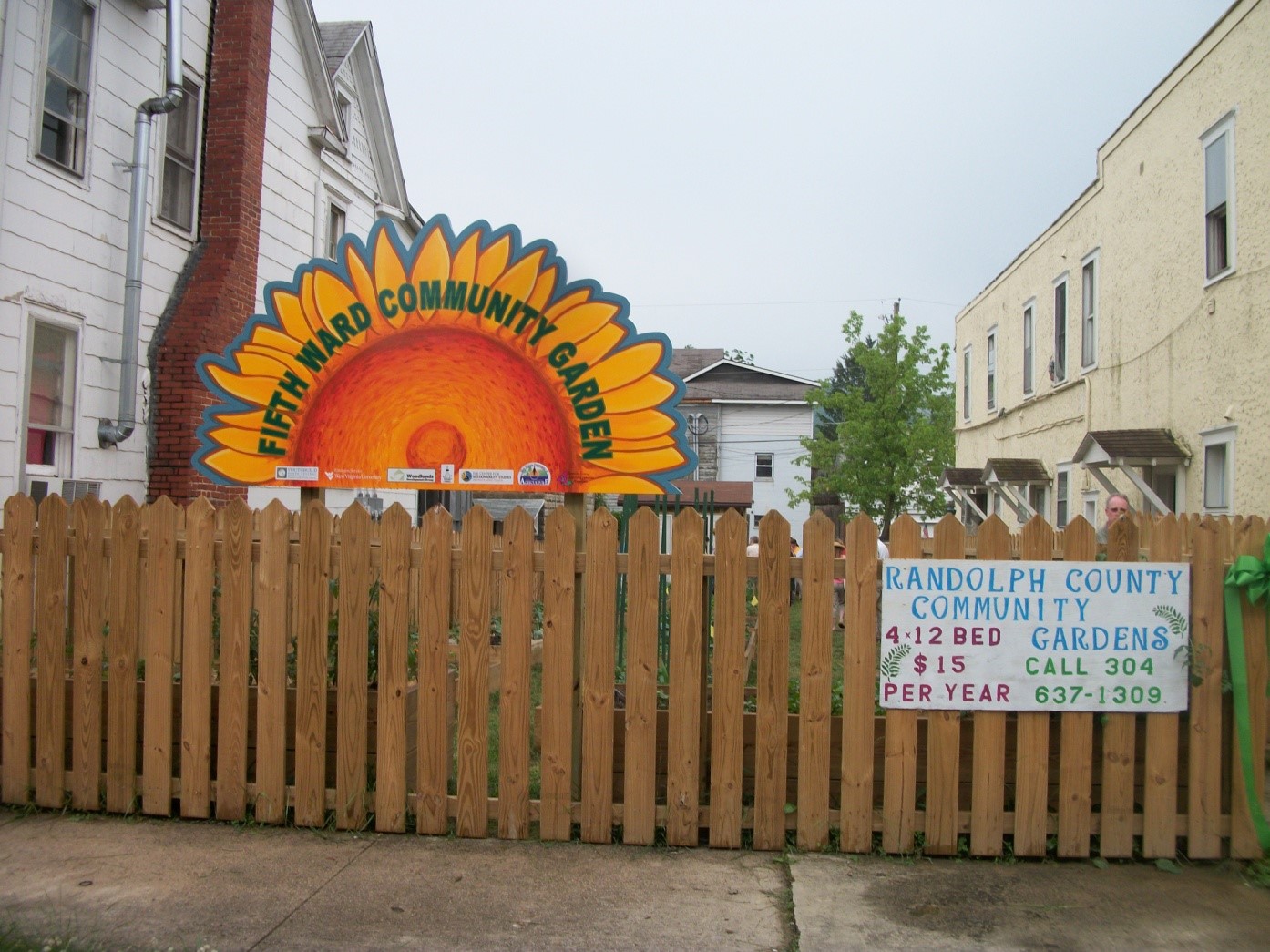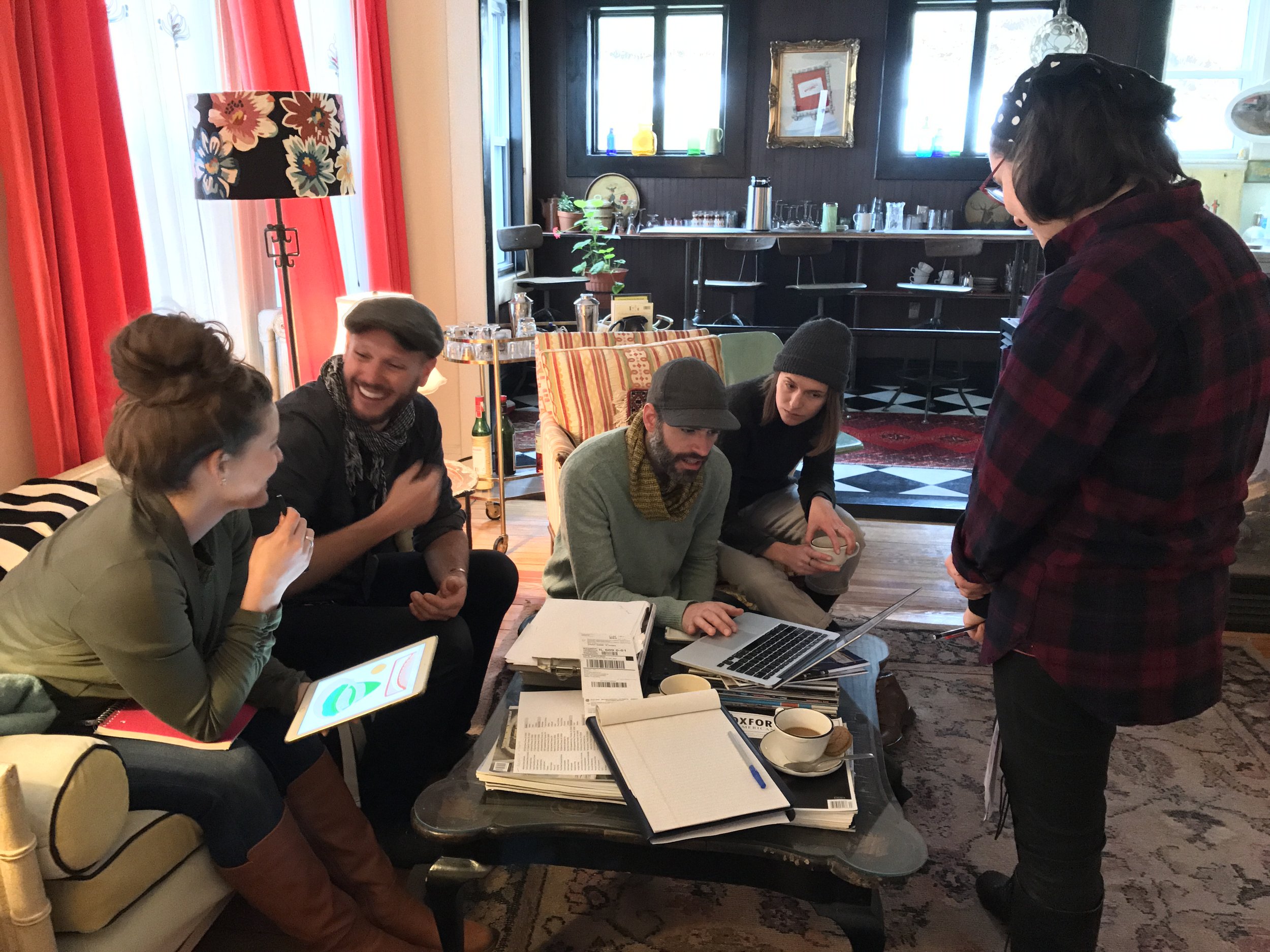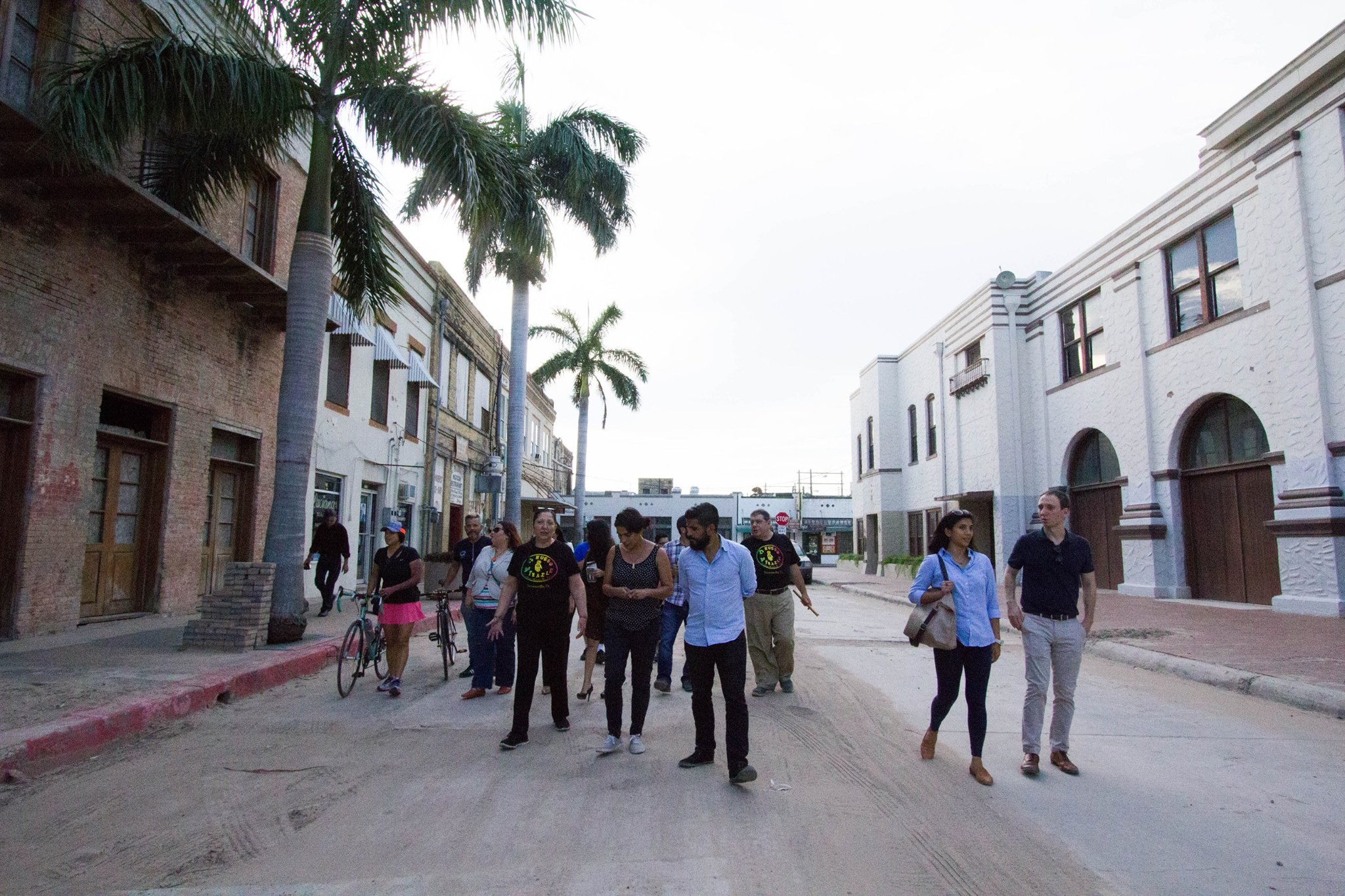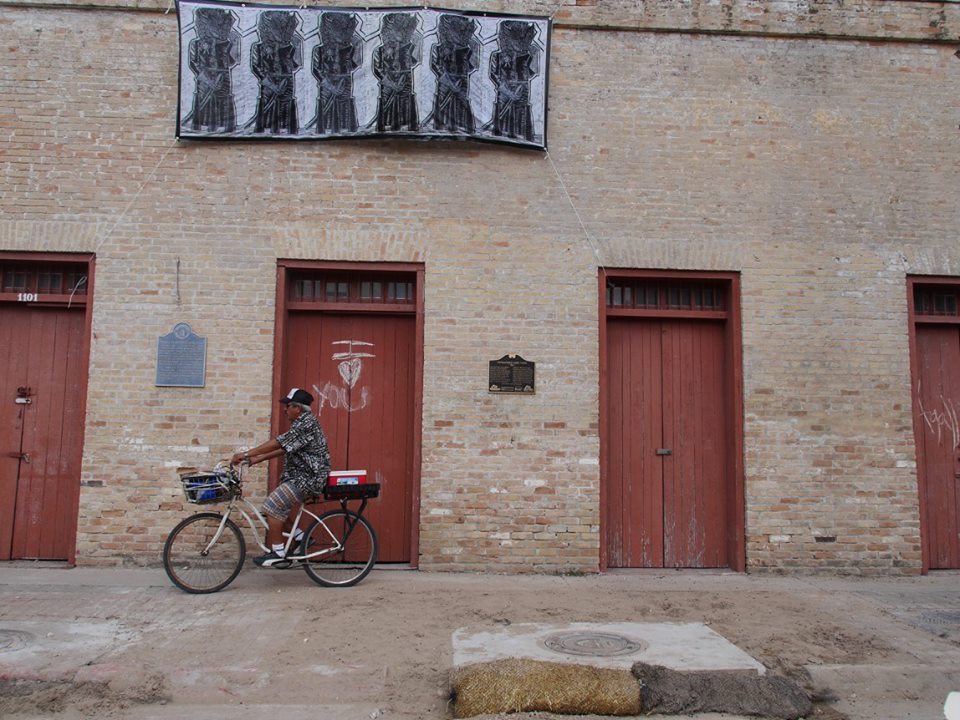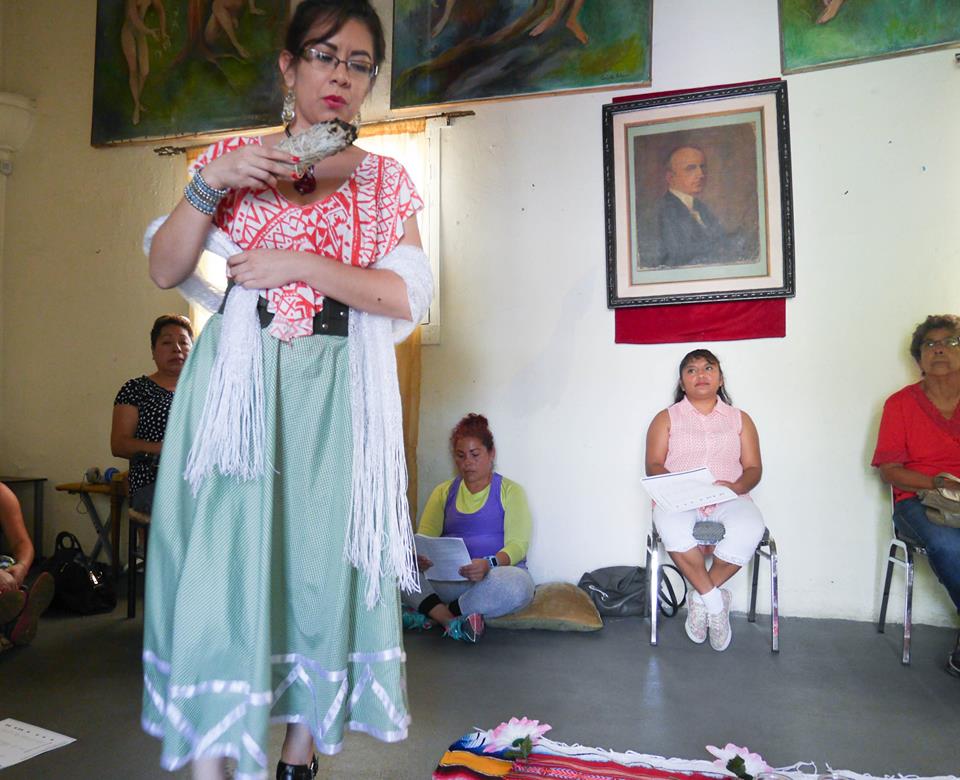Our analytics team recently mapped the landscape of healthy food in Southern Dallas — learn what they found and/or contribute your own knowledge to the live map in this post.
Read MoreEl Sonido del Agua Workshops
Alongside our partners La Union del Pueblo Entero (LUPE), A Resource in Serving Equality (ARISE), the Narciso Martinez Cultural Arts Center, and four selected musicians (Frutoso Villareal, Jonathan Salinas, Refugio Ortiz, and Juan Manuel Alejo) we have recently wrapped up a series of three songwriting workshops in the Alberta Meadows and Owassa Acres colonias.
In July, a workshop was held at each colonia where musicians, residents, and partner organizations came together to write corrido verses following discussions about daily life and the impact of flooding in the colonias. The workshops began a walk around the neighborhood and a Colonia Audit of Public Spaces (CAPS), where the residents recorded the physical conditions and their thoughts on spaces in the community focusing on areas related to drainage, flooding and safety. Musicians participated in the audit as well to hear about challenges and success stories within the colonias. After walking the neighborhood, the musicians performed some of their music and spoke about the corrido process and the musical elements that make a compelling corrido. Residents discussed the music performed and then began to write their own stories as corrido verses.
The second round of workshops took place in early September. During these workshops, groups worked collaboratively to write corrido lyrics, and residents shared out their writings. Musicians led conversations to explore the format of the song to be produced. At the end of September, residents, musicians, and partners re-convened to weave the writings produced through the second workshop into cohesive songs that represent the struggles of each colonia.
We are looking forward to continuing work with our partners, residents, and musicians to record the songs produced through these workshops and plan a dance celebration in the new year. Stay tuned for updates!
El Sonido del Agua is a multi-year creative placemaking project that supports the expression of local voice through music, and is supported by ArtPlace America.
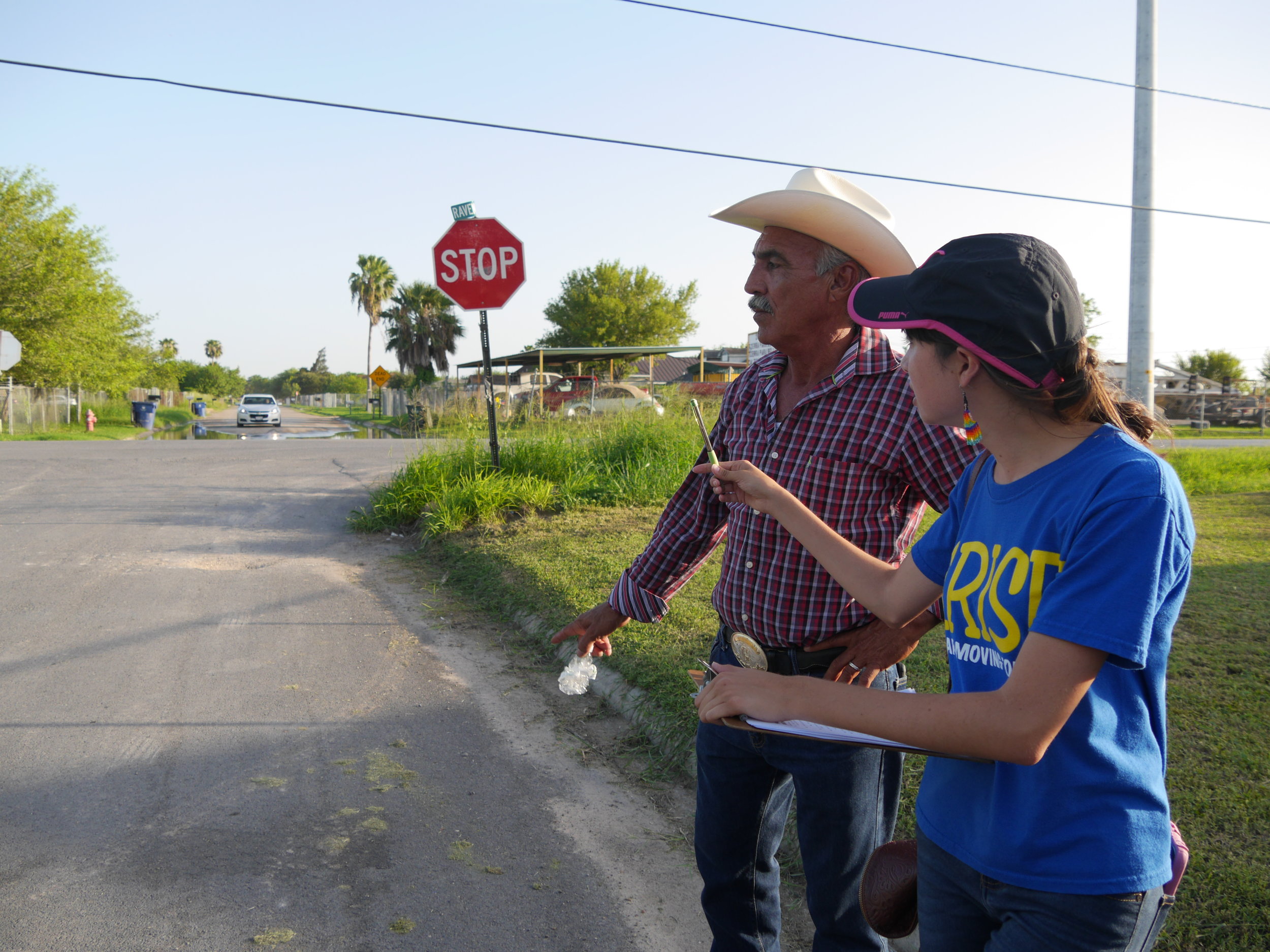
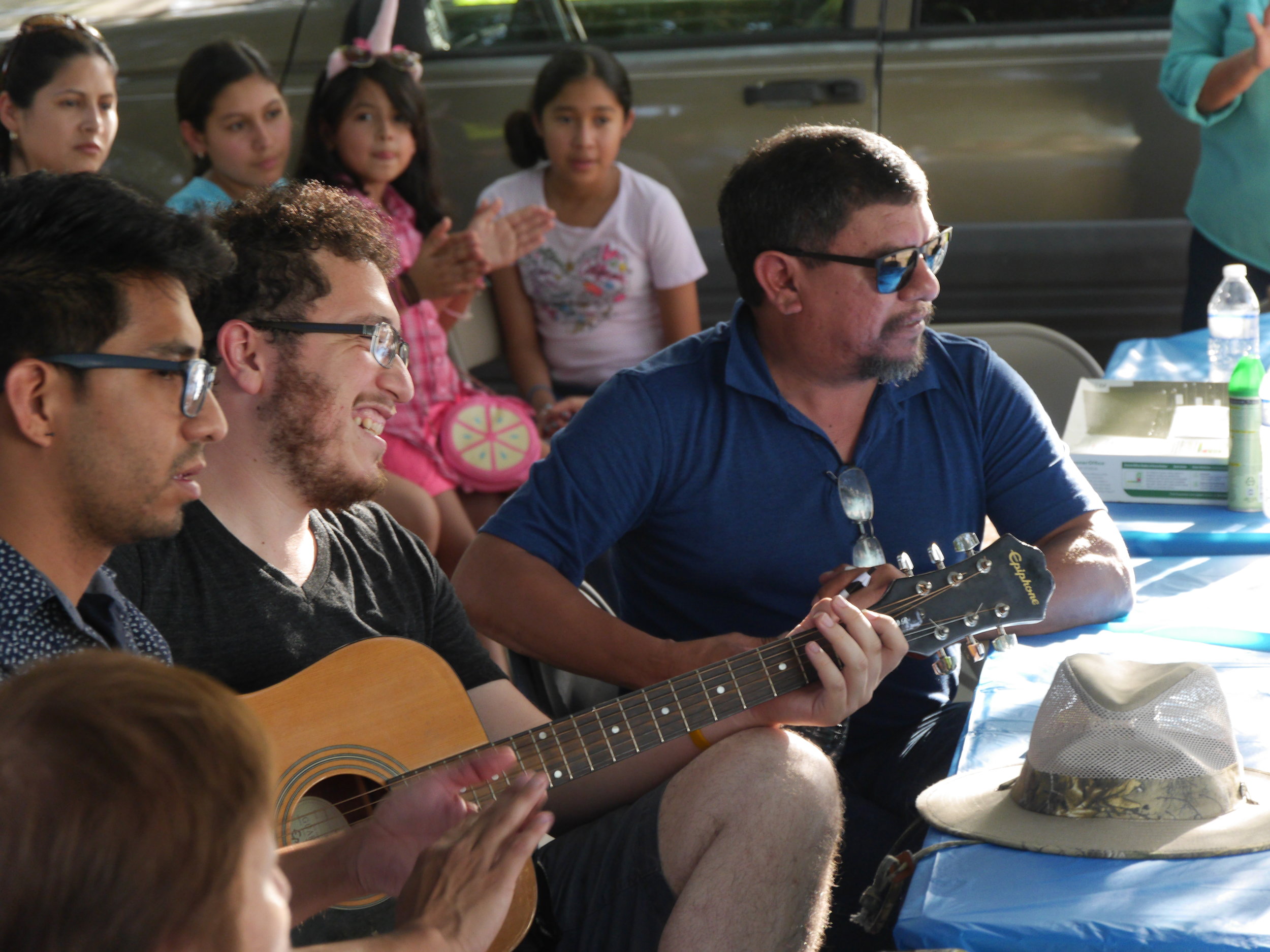
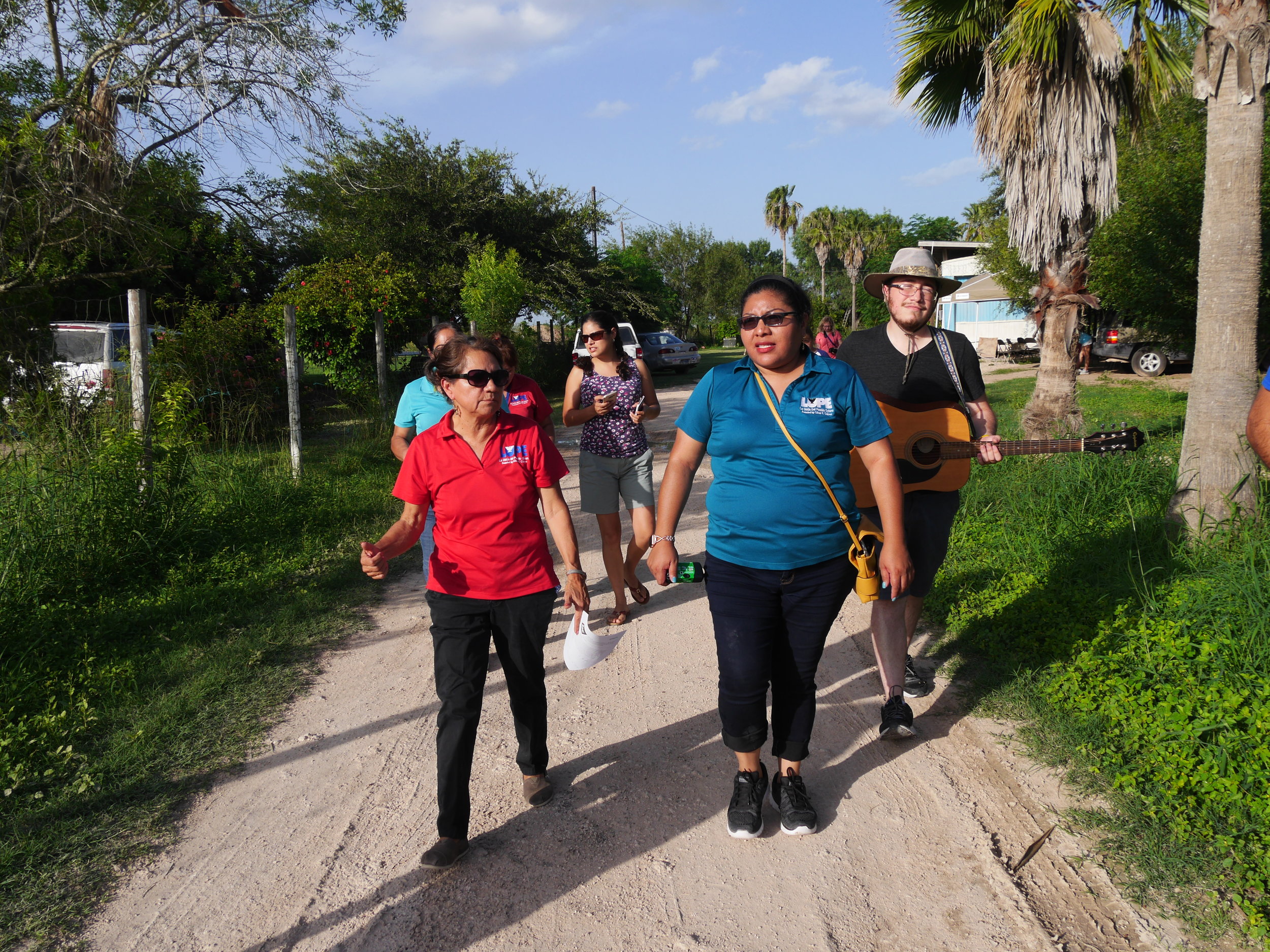




Macon Starks Update
The Macon Starks project is a housing development at the intersection of Macon and Starks Streets in the Bonton neighborhood. This housing project, which began a couple years ago, was met with a few delays along the way, but we are pleased to announce that the five senior housing units have been built and all are currently occupied. This project is a partnership between East Dallas Community Organization and [bc].
The units are a mix of duplex and single family dwellings centered around a communal garden space with raised planter beds. We look forward to advancing our design practice through different housing typologies serving the various populations of our cities.
Harold Simmons Park Public Workshops
[bc] is serving as a consultant to the Trinity Park Conservancy, bringing our skill set in public interest design to engage Dallas' communities around the future of Harold Simmons Park, 200 acres along the Trinity River. Engagement efforts will focus on discovering how Dallas residents currently use parks and public space while encouraging them to re-imagine what this area could be. This understanding will inform the design of the 200 acre Harold Simmons Park.
Join us as we support the Trinity Park Conservancy in envisioning the future of the Harold Simmons Park as a public space that connects Dallas residents to each other and nature. Starting September 15th, the Conservancy will host 10 public workshops across the city to reimagine our river. For more about Harold Simmons Park, click here. Click here to RSVP to the upcoming workshops.
buildingcommunityWORKSHOP Launches Freedmen’s Town Storytelling Project
Residents of North Texas Freedmen’s Towns will Document Community Histories
buildingcommunityWORKSHOP ([bc]) has been awarded a National Parks Service African American Civil Rights Grant to launch a new project focused on North Texas Freedmen’s Towns. The “Freedmen’s Towns Stories” project aims to support residents of Dallas’s historic Freedmen’s Towns and their descendants in telling the stories of the changes their communities faced during the Civil Rights Period through oral history, cross-generational interpretive storytelling, and text-based multimedia products.
[bc] has partnered with noted architectural historian Dr. Kathryn Holliday, Founding Director of the University of Texas at Arlington’s Dillon Center for Architecture, along with UTA College of Architecture, Planning, and Public Affairs students, and the Writer’s Garret, the first nonprofit literary center in North Texas, which has connected over 2 million writers, readers, and audience members over the past 23 years, to build local capacity through this endeavor. Over the course of the project, [bc] and its partners will train and provide support to residents in conducting historical research, navigating archives, historic storytelling in written and oral formats, and recordings oral histories.
“Since 2012, [bc] has worked with residents of the Tenth Street Historic District—a historic former Freedmen’s Town—to assist residents preserving and celebrating their community’s rich history. With this grant, we will further advance this important work, engaging communities and residents across the region,” says Thor Erickson, President & Managing Director of [bc].
As a community design center with expertise in translating technical information into an accessible graphic format, [bc] will create manuals that will aid additional urban North Texas Freedmen’s Towns in the task of historic storytelling. These resources, as well as the oral histories and written stories collected through the project, will be hosted in a new online repository, which will be built over the course of the project period. This website will establish a new online presence for urban North Texas Freedmen’s Towns’ collaborative efforts.
The project’s launch coincides with a timely need. As construction continues on the Southern Gateway project, which will bring a multimillion dollar deck park to the neighborhood, Dallas’s Tenth Street Historic District faces imminent redevelopment pressures.
Several historic structures recently received demolition orders as residents have witnessed steadily increasing outside interest in neighborhood real estate. These events have catalyzed a number of local conversations about historic preservation, equity, and their intersection.
Freedmen’s Towns Stories will build resident capacity to preserve the local histories of these oft-overlooked communities. By training residents to undertake these efforts, the project will further equip the many residents who are dedicated to this endeavor.
Disclaimer:
Partially funded by the African American Civil Rights program of the Historic Preservation Fund, National Park Service, Department of the Interior. Any opinions, finding, and conclusions or recommendations expressed in this material do not constitute endorsement or necessarily reflect the view of the Department of the Interior.
About [bc]:
The buildingcommunityWORKSHOP is a Texas based nonprofit community design center seeking to improve the livability and viability of communities through the practice of thoughtful design and making. We enrich the lives of citizens by bringing design thinking to areas of our cities where resources are most scarce. To do so, [bc] recognizes that it must first understand the social, economic, and environmental issues facing a community before beginning work. (www.bcworkshop.org)
Hurricane Harvey Disaster Recovery Community Engagement
As Houston moves from relief to long term recovery, the City is preparing a plan for the $1.2 billion that will be received from the U.S. Department of Housing and Urban Development (HUD) in the fall. In order for this money to be spent in the most useful and effective way, the Housing and Community Development Department (HCDD) partnered with local community organizations, super neighborhood councils, City Council districts, and civic clubs to organize 17 public meetings to assess housing and recovery needs and priorities in Houston. [bc] and the Community Design Resource Center (CDRC) designed interactive work sessions to better engage diverse communities in Houston and build the department's capacity to facilitate and implement community engagement activities as part of their programs. A summary of the findings from these meetings as well as the Houston local action plan were publicly released by the HCDD on June 26, 2018.
These community meetings took place in various neighborhoods and engaged over 800 people. At these meetings, surveys were collected in order to track people’s personal circumstances and needs since Harvey, but the majority of the discussions were aimed at talking about their neighborhoods as a whole. This neighborhood-level feedback was documented through a round-robin discussion format and mapping exercises. Residents also had the opportunity to prioritize housing and infrastructure programs for which the CDBG-DR funds could be used.
We look forward to continuing to work with the City of Houston to engage diverse communities!
Four Musicians Selected for El Sonido del Agua
On June 13, 2018 the musician selection committee—comprised of community organizers, conjunto musician experts and designers—reviewed applications and held live auditions at the ARISE Support Center in Alamo, TX. The Support Center is just a few miles from Alberta Meadows and Owassa Acres, two colonias which are focus areas for the project.
Four musicians rose to the top of the list during this session and the committee thought that finding a way for the four of them to work together would foster the best possible outcomes for the project. Two of the musicians are from the colonias themselves (one each from Alberta Meadows and Owassa Acres). The other two live in the Rio Grande Valley and have experience working with colonias. This combination of local expertise and regional understanding of drainage and music should make for a lively experience!
We will announce the musicians at the July 11 and 12 songwriting workshops and community audits, to take place in the colonias. These events will kick off the next phase of the project. Musicians will lead corrido writing writing workshops, following walking community audits led by [bc]. The community audits are designed to support residents of the colonias in identifying, documenting, and reporting infrastructural issues that impact drainage and catalyze conversations about the challenges of daily living in a flood prone area. These audits and conversations will be a foundation for writing corridos (narrative ballads) about these conditions.
Additional workshops will be held this summer to refine the corridos and then produce conjuntos based on these stories. This effort to put the daily struggles that colonia residents face into song is at the heart of El Sonido del Agua.
This project is supported by a grant from the ArtPlace America National Creative Placemaking Fund.
2018 State of Dallas Housing Report
Read the full report here!
Learn more about bcANALYTICS and check out the 2016 and 2017 State of Dallas Housing Reports!
We are excited to release the third annual State of Dallas Housing report, the latest in our series of data-driven analytics reports that examine the issue of housing affordability within Dallas and present opportunities for equitable housing development.
The maps and graphics included in the report illustrate longitudinal trends in housing production and new residential construction, as well as growth in population, jobs, and income, across Collin, Dallas, Denton and Tarrant counties. The report looks at median incomes by racial and ethnic group and by industry of employment in relation to average housing costs by Census tract.
The bcANALYTICS team interviewed 10 housing experts in Dallas to determine priority areas where additional research was needed. The need to better understand Dallas’s housing market within the context of the four-county region (Collin, Dallas, Denton, and Tarrant) emerged as a top priority. The report examines key data that demonstrates how Dallas’s housing market is not producing enough affordable housing to meet the needs of its socioeconomically diverse population. With costs of housing on the rise, the housing products on the Dallas market—and the regional market—are increasingly out of reach for many. Moving to surrounding communities does not, according to the study, provide a viable option for finding more affordable housing.
With the City of Dallas adopting a new Comprehensive Housing Policy, Dallas’s residents and stakeholders will need additional metrics and context to understand the issue of housing affordability at the city-wide scale. This new report aims to equip our city with the knowledge to be informed advocates for their communities’ interests.
EXECUTIVE SUMMARY
In 2017 North Texas continued to be one of the fastest growing regions in the United States, and one of the top housing markets in the United States. As the City of Dallas’ prepares to implement its recently passed housing policy, aimed at increasing the production of housing units across the city, it is important to understand housing production at a larger scale to pinpoint where new housing units or typologies may be needed at this critical juncture. The 2018 State of Dallas Housing Report explores current housing trends in the City of Dallas and socioeconomic trends across the four most populous counties of North Texas (Collin, Dallas, Denton, and Tarrant) to help contextualize housing production and identify potential challenges and opportunities for improving access to housing for residents of Dallas and North Texas.
The region’s rise in population, new housing, employment, and income exemplifies the uneven nature of development and economic growth across North Texas. Growth in the region is concentrated in specific cities and neighborhoods, while other areas have experienced less measurable change in recent years. Housing production has followed this growth in parts of the region. However, housing production in the city of Dallas has been heavily concentrated in just a few of the Dallas’ nearly 400 neighborhoods despite more widespread growth across Dallas.
This report helps quantify these trends in Dallas’ housing production from 2011 to 2017, contrasting them with socioeconomic changes and housing production across North Texas. Is Dallas’ goal of increasing the production of housing feasible, inclusive, and able to address the needs of all Dallas residents? Central to this report is the focus of housing accessibility and affordability for different income and population groups in Dallas, based on the ratio of housing values to median income. Has new housing production across North Texas provided opportunities for Dallas’ median income households to access housing in surrounding communities? This report suggests the answer is no.
As more of Dallas’ housing production is focused on higher-valued homes, largely in the city’s northern sector, new housing built in North Texas from 2011 to 2016 was largely concentrated in areas that are the least affordable to Dallas’ median income households of color. As the City weighs a new housing policy to stimulate housing production in Dallas it is important to understand both the history of recent housing production in Dallas and the connection between housing production and Dallas’ existing residents.
This report finds that despite large numbers of new housing units built across the region, many Dallas households are only able to easily afford housing in certain parts of North Texas, primarily in Census tracts that are heavily segregated with high poverty and further removed from much of the economic growth in North Texas. Additionally, some of the fastest growing industries in North Texas tend to pay lower wages that create an additional barrier to accessing affordable housing in proximity to jobs and other amenities based. The lack of production of affordable rental units only further enforces the challenge of Dallas’ minority and low income residents from accessing quality affordable housing at the expense of providing luxury housing for more affluent new residents moving to neighborhoods close to Downtown Dallas.
El Sonido del Agua Call for Musicians - deadline for submission extended to JUNE 15!
We are thrilled to announce the Call for Musicians for "El Sonido del Agua," a multi-year creative placemaking project supported by ArtPlace America.
The deadline for submissions has been extended to JUNE 15!
As part of this project, we will commission one or more local corrido writers / conjunto musicians to lead workshops with colonia residents and collaboratively write corridos that speak to residents’ experiences of flooding and other stormwater issues in the colonias.
The call for musicians is below:
Convocatoria para Músicos de Conjunto Regional / Compositores de Corridos
El Sonido del Agua - Valle del Rio Grande
Convocatoria de Músicos empieza: 5-17-18
Fecha límite para entregar solicitud: 6-15-18
Favor de enviarla escrita o verbalmente
Para preguntas:
Para preguntas sobre el proyecto contacte a Thor - thor@bcworkshop.org
Envíe preguntas en Español a Martha - martas@lupenet.org o Laura - laura.arise94@gmail.com
Envíe preguntas sobre los talleres de música a Rogelio - nrogelio@hushmail.com
Descripción del Proyecto:
buildingcommunityWORKSHOP ([bc]) se complace en anunciar la convocatoria de propuestas de músicos para El Sonido del Agua, un proyecto que asociará a residentes de colonias con escritores de Corrido / músicos de Conjunto.
El Sonido del Agua es un proyecto de ritmo acelerado y altamente colaborativo. Los músicos trabajan con residentes, organizadores comunitarios, expertos en políticas y salud pública, diseñadores y planificadores, trabajadores de la ciudad y del condado y más. Los músicos seleccionados para el proyecto le enseñarán a residentes de colonia cómo escribir corridos que respondan y se enfoquen en los problemas relacionados con el drenaje, las inundaciones y los huracanes al igual como los problemas afectan su vida cotidiana. Dependiendo de los resultados de los talleres se seleccionarán múltiples Corridos para que se produzcan en Conjuntos.
Los músicos deberían estar dispuestos a trabajar en colaboración con los líderes de las colonias y aliados comunitarios y deberán ser capaces de enseñar como escribir canciones y ser músicos de Conjunto o socios de los músicos de Conjunto.
La línea de tiempo del proyecto es la siguiente:
- Convocatoria de lanzamiento de músicos - 5-15-18
- 1er Auditoría comunitaria - Observar condiciones secas - 6-11-18
- Preguntas - formato de seminario web - 6-13-18
- Llamada para músicos - 6-15-18
- Selección y notificación de músicos - 6-15-18
Actividades de Talleres:
- 2da Auditoria comunitaria - condiciones después de la lluvia - TBD
- 1er Taller de Corridos - TBD
- 2do Taller de Corridos - TBD
- 3er Taller de Corridos - TBD
- Finalización del Corrido - JULIO
- Composición de letra musical con conjunto - AGOSTO
- Funciones / Sesiones de Música - SEPTIEMBRE - OCTUBRE
- Celebraciones en la Colonia - OCTUBRE - NOVIEMBRE
Esta iniciativa está respaldada por el patrocinio de ArtPlace America. Para conocer más sobre ArtPlace America, visite el sitio web: www.artplaceamerica.org
PRINCIPIOS DEL PROYECTO
Las presentaciones de propuestas deben enfocarse en este proyecto musical en colaboración con los miembros de la comunidad utilizando los principios de guia y el proceso de Activacion Vacantes [bc] que se encuentran a continuación:
- Los corridos deben versar sobre la vida cotidiana, las inundaciones, los huracanes y las travesías que les trajo, incluyendo los problemas relacionados con la salud pública, la vivienda digna y las condiciones de vida.
- El proyecto debe ser impulsado por objetivos definidos y articulados por los residentes de un lugar en particular
- Debe elevar las voces y motivar la participación cívica
- Fortalecer la identidad del vecindario y la historia cultural, desafiando las normas, incluida la aburguesación y el desplazamiento
- Fomentar la colaboración y la participación creativa entre un conjunto diverso de personas, que culmina en un trabajo co-creado por el artista y la comunidad
- Empoderar a los residentes para abordar el futuro de su propio vecindario y buscar mayores resultados relacionados con los objetivos de la comunidad
- Cambiar las percepciones de los desafíos
Para más información en procesos de Activación Vacantes se pueden encontrar aqui.
¿Quienes pueden ser candidatos?
Todo tipo de músico(s) que viva en los El Valle del Rio Grande en EE.UU es elegible a participar y se le invita a enviar una solicitud. Los músicos deben demostrar un gran interés en la justicia social y un gran deseo de trabajar en colaboración con partes interesadas de diversos orígenes económicos y culturales. Los músicos interesados en participar en el diseño, proyectos comunitarios, la planificación urbana o en la creación de espacios creativos son especialmente alentados a presentar solicitudes y aplicar. Las solicitudes son abiertas para ambos grupos colectivos e individuos.
PREMIO DEL PROYECTO
El presupuesto musical es de $ 30,000. Esto se puede otorgar a un o más de un músico, dependiendo de la calidad de la solicitud y su propuesta. El presupuesto incluye la participación en los eventos mencionados anteriormente y el trabajo del músico. Los músicos deberán participar en una auditoría de colonias para informarse de la vida cotidiana de los residentes. Este evento brindará a los músicos la oportunidad de conocer a los residentes y conocer a la comunidad. La programación de este evento puede incluir un recorrido a pie u otros eventos similares para ayudar a presentar a los vecinos a los músicos.
INSTRUCCIONES PARA ENTREGAR SOLICITUD Y PROPUESTA
Las solicitudes se pueden enviar en línea aquí, o verbalmente con Laura o Martha. El personal de [bc] está feliz de ayudar a los solicitantes a completar su solicitud en cualquier momento del proceso. Todas las preguntas de los solicitantes pueden dirigirse con Thor Erickson a el correo electrónico: thor@bcworkshop.org
Todas las aplicaciones requerirán:
- Información del solicitante: nombre, dirección, número de teléfono, correo electrónico y sitio web (si corresponde)
- Biografía del Músico (700 caracteres)
- Testimonio escrito del músico (700 caracteres)
- Un testimonio que proclama la experiencia y el interés en trabajar en colaboración con las comunidades durante el desarrollo de la música
- Propuesta de proyecto (900 caracteres)
- Especifique el interés y el enfoque del artista para ayudar con las prioridades establecidas de la comunidad
- Mencione cómo se relacionaría el trabajo con los principios de activación de vacantes
- Mencione cómo el músico trabajará con los residentes a través de talleres
- Describa el enfoque y si el músico tiene cualquier otro formato que prefiera que el esquema anterior.
- Describe cómo el músico creará el Corrido con un Conjunto
- Incluya un presupuesto preliminar que describa los gastos y las redistribución de todas las personas involucradas.
- Muestras de trabajo y descripciones: Los músicos pueden proporcionar hasta 5 muestras de trabajo. Todos los enlaces e imágenes deben compilarse en un PDF, menos de 10 MB.
- Medios de audio y / o video: hasta 3 de las muestras de trabajo pueden ser de audio o video. Si usa Vimeo, Soundcloud o YouTube, no proteja con contraseña los enlaces multimedia. El tiempo total de audio o video enviado para las 3 muestras de medios no debe exceder los 6 minutos. Todos los enlaces deben estar relacionados con la hora de inicio.
- Documentación fotográfica de trabajo de audio / video y trabajo en 2D / 3D: las fotos deben tener 72 ppp, no menos de 800 píxeles y no más de 1100 píxeles a lo mucho. El tamaño total del archivo de cada imagen no puede superar los 10 MB.
- Para cada muestra de trabajo favor de incluir:
- El título, año y dimensiones
- El rol del artista en la producción de la obra
- Descripción breve del trabajo
- Solo si aplica, incluya una breve descripción de cómo se utilizó el compromiso de la comunidad para crear o compartir el trabajo
SCORING
Las solicitudes serán evaluadas por [bc] y el Comité Asesor, según los siguientes criterios:
- La alineación del solicitante con los valores del proyecto
- La experiencia del solicitante involucrando a la comunidad de maneras innovadoras, creativas y consideradas
- La experiencia del solicitante de trabajar en grupo con restricciones de tiempo y una fecha límite
- El interés expresado por el solicitante de trabajar con los residentes de la colonia y los socios del proyecto
- El interés del solicitante en incorporar los datos recopilados a través de la auditoría
- La fortaleza de la capacidad de los solicitantes para incorporar principios estéticos para abordar desafíos basados en la comunidad
- Originalidad, competencia y consistencia de los solicitantes a través de muestras de trabajo
ALIADOS EN ESTE PROYECTO
- LUPE
- ARISE
- TXLIHIS
- Narciso Martinez Cultural Arts Center
- UTRGV - Director of Estuary, Environmental and Special Projects (Cameron County Region)
- University of Texas School of Public Health
- Department of Population Health and Behavioral Sciences, UTRGV School of Medicine
RECURSOS ADICIONALES
Call for Conjunto Musicians / Corrido Writers
El Sonido del Agua - Rio Grande Valley
Call for Participation Release Date: 5-17-18
Application Deadline: 6-15-18
Submit Via Typeform, or verbally
Contacts:
Questions about the project Thor - thor@bcworkshop.org
To submit verbally Spanish Martha - martas@lupenet.org or laura.arise94@gmail.com
Questions about the workshops - Rogelio - nrogelio@hushmail.com
PROJECT OVERVIEW
buildingcommunityWORKSHOP ([bc]) is excited to announce the call for proposals from teaching musicianfor El Sonido del Agua, a project that will partner colonia residents with Corrido writers / Conjunto musicians.
El Sonido del Agua is a quick paced and highly collaborative project. Musicians will get to know residents and stakeholders, community organizers, public health and policy experts, designers and planners, City and County workers, and more. The musicians selected for El Sonido del Agua will teach residents how to write Corridos that respond to and address issues related to drainage, flooding, and hurricanes and the dealings of daily life through these storm events. Depending on workshop outcomes, multiple Corridos may be selected to be produced into Conjuntos.
The musicians should be willing to work in collaboration with colonia leaders and local stakeholders, should be able to teach songwriting, and either be a Conjunto musician or partner with Conjunto musicians.
The timeline of the project is as follows:
- Call for musicians release - 5-15-18
- Community Audit 1 - 6-11-18
- Q&A for applicants and auditions - 6-13-18
- Applications due - 6-15-18
- Selection and notification of musicians - 6-15-18
Workshop activities:
- Community Audit 2 - wet after rain - TBD
- Corrido Workshop 1 - TBD
- Corrido Workshop 2 - TBD
- Corrido Workshop 3 - TBD
- Corrido finalization - JULY
- Conjunto writing - AUGUST
- Performances - SEPTEMBER - OCTOBER
- Colonia celebrations - OCTOBER - NOVEMBER
This initiative is supported by ArtPlace America. To learn more about ArtPlace America visit www.artplaceamerica.org
PROJECT PRINCIPLES
Proposal submissions should focus on this music project in collaboration with community members utilizing [bc]’s Activating Vacancy guiding principles and process found below:
- Corridos should be about daily life, flooding, hurricanes, and living through this including issues related to public health, fair housing, and general living conditions.
- The project as a whole should:
- Be driven by a set of goals defined and articulated by the residents of a particular place.
- Elevate voices and encourage civic participation.
- Strengthen neighborhood identity and cultural history, challenging norms, including gentrification and displacement
- Foster collaboration and creative participation between a diverse set of individuals, culminating in a work co-created by artist and community
- Empower residents to address the future of their own neighborhood, and pursue larger outcomes related to community goals
- Shift perceptions of challenges
More information on the Activating Vacancy process can be found here.
ELIGIBILITY
Musicians of all disciplines living in the United States Lower Rio Grande Valley are eligible to apply. Musicians should demonstrate a strong interest in social justice and desire to work collaboratively with stakeholders from diverse economic and cultural backgrounds. Musicians with interests in design, community-engaged projects, urban planning or creative placemaking are especially encouraged to submit applications. Individuals and collectives/groups are welcome to apply.
PROJECT AWARD
The total budget for the musician stipend is $30,000. This may be awarded to 1 or more than 1 musician depending on scope of application and thoroughness. This fee should include participation in the events listed above, and the unique approach of the musician. Musicians will be required to participate in a colonia audit to inform their understanding of residents' daily experiences. This event will provide musicians with the opportunity to meet residents and learn about the community. Programming for this event may include a walking tour or other similar events to help introduce neighbors to the musicians.
SUBMISSION INSTRUCTIONS
Applications may be submitted online here, or verbally to Martha or Stephanie. [bc] staff are happy to support applicants in the completion of their application at any point in the application process. All applicant questions can be directed to Thor Erickson at thor@bcworkshop.org.
All applications will require:
- Applicant Information: name, address, phone number, email and website (if applicable)
- Musician Bio (700 characters)
- Musician Statement (700 characters)
- A statement that proclaims experience and interest in working collaboratively with communities during the development of music
- Project proposal (900 characters)
- Specify artist’s interest in and approach to addressing stated community priorities
- Address how the work would relate to Activating Vacancy principles
- Address how musician will work with residents through workshops.
- Describe approach and if the musician has any other format they prefer than the outline above.
- Describe how musician will merge the Corrido with a Conjunto
- Preliminary budget that describes expenses and stipends to all people involved.
- Work Samples and Descriptions: Musicians can provide up to 5 work samples. All links and images should be compiled into one PDF, less than 10MB.
- Audio and/or Video Media: Up to 3 of the work samples can be audio or video. If using Vimeo, Soundcloud, or YouTube, do not password protect media links. The total time of audio or video submitted for all 3 media samples should not exceed 6 minutes. All links must be cued to the start time.
- Photo Documentation of Audio/Video work and 2D/3D Work: Photos should be 72 DPI, no smaller than 800 pixels and no larger than 1100 pixels on the long side. The total file size of each image can be no larger than 10MB
- For each work sample include:
- Title, year and dimensions
- Role of the artist in the work’s production
- Brief description of the work
- If applicable, brief description of how community engagement was used to create or share the work
SCORING
- Applications will be evaluated by [bc], and the Advisory Committee, based upon the following criteria:
- Applicant’s alignment with project principles
- Applicant’s experience engaging communities in innovative, thoughtful and creative ways
- Applicant’s experience working collaboratively within time restraints and on deadline
- Nuance and strength of applicant’s expressed interest in working with colonia residents and project partners
- Applicant’s interest in incorporating data collected through the audit
- Strength of applicants ability to incorporate aesthetic principles to address community based challenges
- Originality, proficiency and consistency of applicants work samples
PROJECT PARTNERS
- LUPE
- ARISE
- TXLIHIS
- Narciso Martinez Cultural Arts Center
- UTRGV - Director of Estuary, Environmental and Special Projects (Cameron County Region)
- University of Texas School of Public Health
- Department of Population Health and Behavioral Sciences, UTRGV School of Medicine
ADDITIONAL RESOURCES
A Note from Our Founder
Dear [bc] Friends—
It's been fifteen years since I started down the path of organizing buildingcommunityWORKSHOP. Today, it gives me great pride to see the breadth of projects being undertaken advancing the public’s interest through design and community engagement.
Thank you to the more than two hundred smart, energetic young designers who joined me. You came from across this country giving your time, talents and energy. And thank you to the hundreds of sponsors who believed design could be a tool for justice. Without your investments [bc] would have never happened.
I am proud to have served as Founding Director and President of this organization. It is time now for the next phase for [bc] and for me. I have been given the opportunity to become the President and CEO of the Trinity Park Conservancy. I am pleased to bring all that I have learned from [bc] and my training to help the City of Dallas achieve its vision of the Trinity River as the natural gathering place for all of Dallas. In many ways, the work of the Conservancy marks the next step for me in my professional practice bringing together design, the public interest, and city building.
As I step down, I am happy to announce the appointment of Thor Erickson, AICP, as the new President of [bc]. During his past two years with [bc], Thor has provided critical leadership to help build capacity while also contributing his planning knowledge and skill. Thor will continue as Managing Director and Omar Hakeem, AIA, as Design Director. I will still be involved with [bc] as Board Chairman.
We began this transition last year and I am thankful to the Board of Directors and all the staff who have worked so hard and been so supportive. It’s been my privilege to serve alongside so many talented individuals as we worked across Texas and the United States. The real heroes have been our partners—community leaders, non-profits, governments and others—whom we can never fully express our appreciation for inviting us to join them in their work.
It has been a joy and honor to have been a part of the impact [bc] has made since 2003. And I want to especially thank my family for their encouragement. I also want to thank all of you for your support. It has been my privilege to work with and assist in creating this special organization.
I am extremely confident in [bc]’s future and look forward to supporting the continued work.
Onward!
Brent
[bc] Founder
Lessons from the Field: Reflections on Rural Placemaking
Find our more about our Rural Placemaking work!
Over the past year, [bc] and the Housing Assistance Council (HAC) have had the opportunity to investigate how tools of arts and community building can be used in rural communities, funded in part by a generous Knowledge Building Grant through the National Endowment for the Arts (NEA).
This partnership has brought resources to existing local efforts and enabled our organizations to better understand how ‘creative placemaking’ works in practice in rural communities and why it is a valuable tool for rural community development now. Through webinars, an internal working group, two pilot projects (in Kinston, North Carolina and Thomas, West Virginia) and a peer-to-peer exchange, we’ve seen the value of vivid local examples in understanding that ‘creative placemaking’ has been happening for a long time in rural communities across the country. Modest increases in resources coupled with capacity building hold vast potential for rural and tribal communities.
We've published a report, Lessons from the Field: Reflections on Rural Placemaking describing our yearlong initiative and reflecting on the last year of our work, outlining key outcomes and lessons learned valuable to the larger practice of rural creative placemaking. Read the full report here.
Several resources were developed during this partnership to expand knowledge and practice of rural creative placemaking, including:
- Summer 2017 Edition of Rural Voices
- Webinar 1: Creative Placemaking 101 + Funding Opportunity
- Webinar 2: Why Creative Placemaking? On the Ground Impacts
This project is supported in part by an award from the National Endowment for the Arts. To find out more about how National Endowment for the Arts grants impact individuals and communities, visit www.arts.gov.
Spotlight on Our Communities
Across Dallas, across Texas, and across the nation, people without means are being left out of the conversations about the design and planning of their communities. [bc] empowers individuals, fostering opportunities for choice in order to amplify the voices of the most underserved residents.
Spotlight on Our Communities is a new email series that highlights the ways [bc] is engaging communities to drive the decisions that will affect their lives. Three episodes below highlight our work in the realm of community-engaged planning, disaster recovery, and resident choice-driven housing design. These stories demonstrate the true impact of our work, which is only made possible through the support of our donors, partners, volunteers, champions, and friends.
We ask for your support as we continue to bring new voices to the table and bring choice to communities who often have none.
Please explore the stories below, share them with your friends and family, and consider making your gift today! And if you aren't subscribed, sign up for our newsletter to ensure you receive future episodes delivered to right to your inbox!
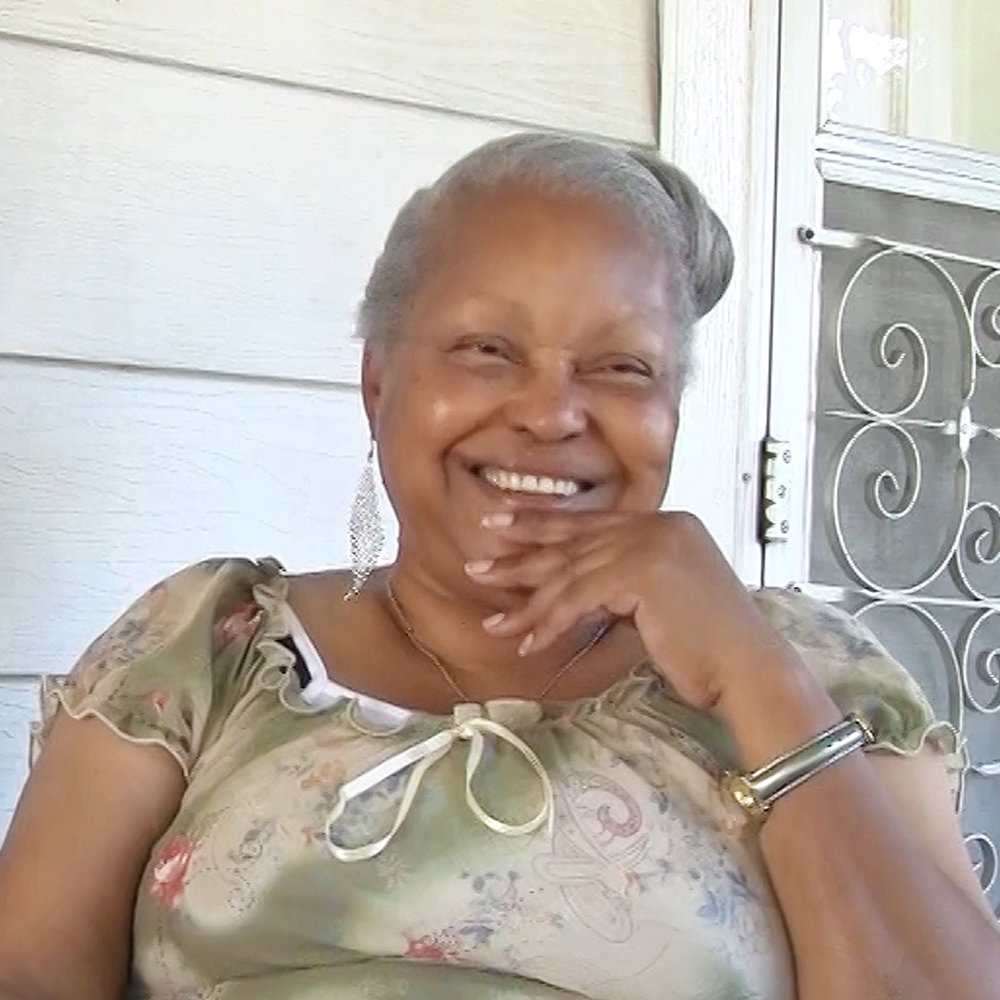
enduring through change
November 7, 2017
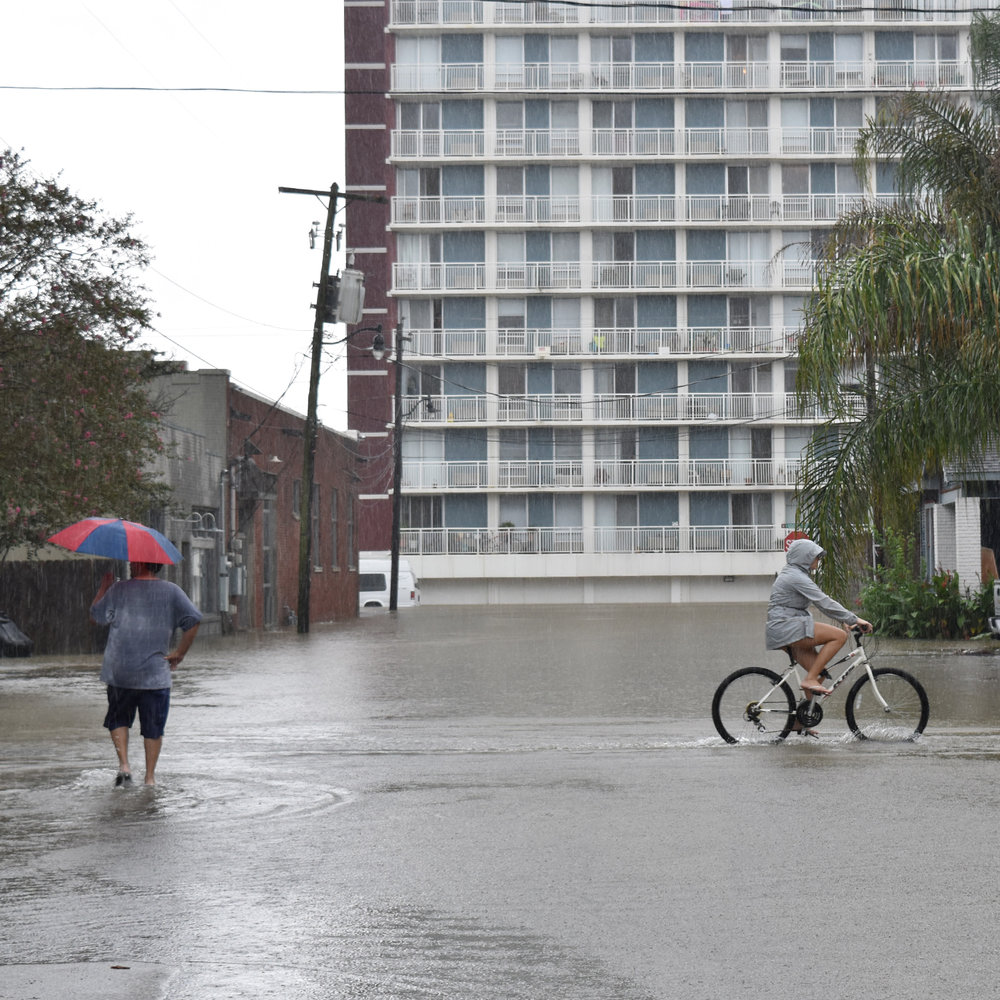
weathering the flood
November 11, 2017
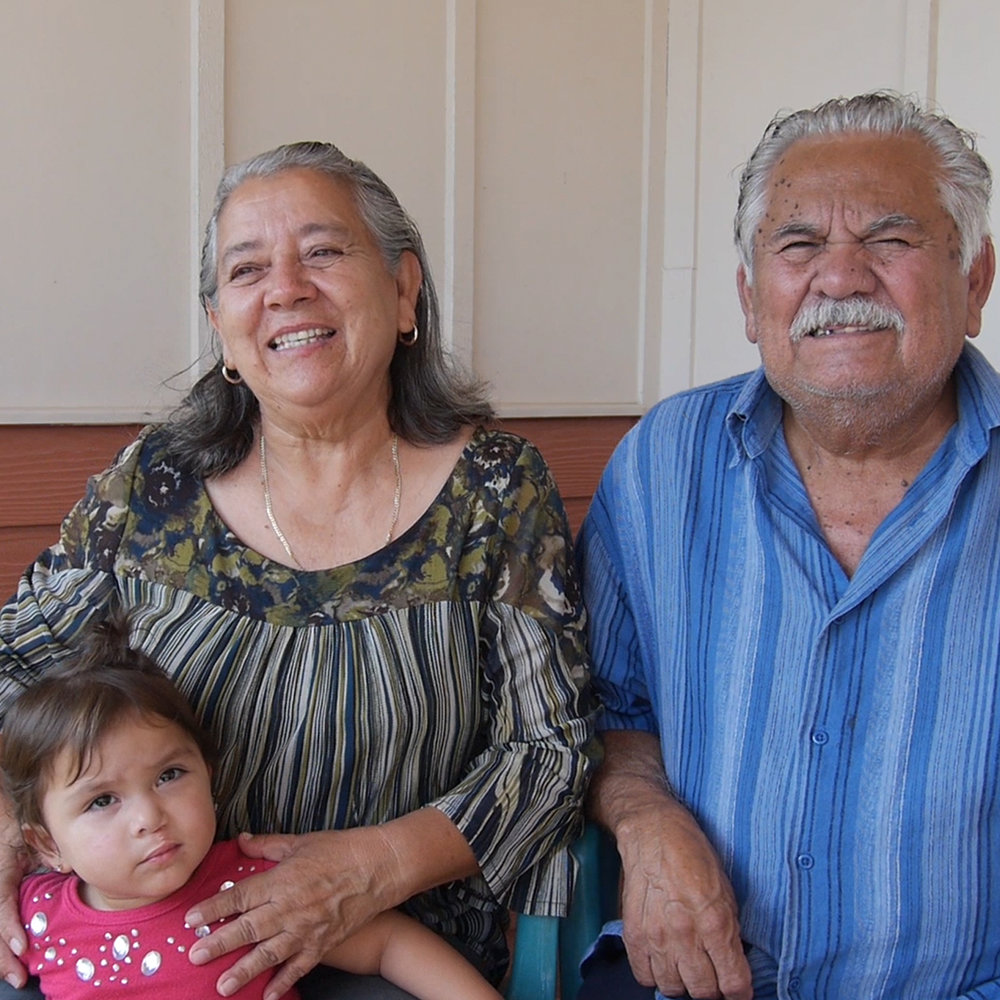
a place to call home
November 14, 2017
Dallas Afterschool Access Map
Learn more about bcANALYTICS and read the full Dallas Afterschool Access Report!
There are 570,000 children aged 14 and under in Dallas County. All of these children qualify for afterschool programs. Funding, physical spaces, operations, staffing, materials and curriculum development are all needed to keep afterschool programs alive. More than 1,000 afterschool programs operate in Dallas County, each finding their own method for covering these costs and serving their students.
Dallas Afterschool has established the After the Bell Alliance to improve access to seats in afterschool programs for children across Dallas County. This partnership of community members, funders, afterschool providers, and advocates envisions that all students will have access to enriching and educational activities after they leave school each day.
Two barriers to achieving this vision exist: costs associated with attending afterschool programs and students' physical access to program sites. Dallas Afterschool aims to increase access to free and low-cost programs for an additional 16,000 students in Dallas County.
This report uses a multi-criteria model to analyze data within five areas: Existing Afterschool Environment, Current Neighborhood Conditions, Local School Environment, Accessibility + Proximity, and Change in Neighborhood Conditions. 10 clusters of Census tracts are identified for the After the Bell Alliance to expand afterschool programs. This approach provides an opportunity to enhance access for low-income students in some of Dallas County's least affluent neighborhoods.
Rural Placemaking Peer Exchange in Thomas, WV
Learn more about our work Activating work!
On October 3rd and 4th, [bc] co-hosted a peer learning exchange with the Housing Assistance Council and Woodlands Development Group in Thomas, West Virginia to share knowledge and best practices for creative placemaking in rural communities. The peer learning exchange included a range of site visits, conversations with local stakeholders, and workshops.
[bc], HAC and Woodlands were joined by rural affordable housing developers, artists, educators and local nonprofit organizations to discuss topics including funding, partnerships, program design, cultural equity and community engagement.
This project is supported in part by an award from the National Endowment for the Arts. To find out more about how National Endowment for the Arts grants impact individuals and communities, visit www.arts.gov.
ACD40 Conference Report
Learn more about the Association for Community Design and #ACD40!
Thank you to everyone who attended the Association for Community Design annual conference in June. ACD40’s theme, CommUNITY, sought to ignite conversations about the different models of practice that the field of community-engaged design uses to operate successfully. We envisioned a conference that would connect people from across the country who are working in and around public interest practices.
You can read our ACD40 Conference Report here. It contains a recap of the schedule, speakers, and sessions. It also includes results to the ACD40 Post-Conference Survey, the ACD 2017 Questionnaire, the Fellowship Survey, the Gender Equity Survey, and the Community Design Survey.
A big thank you to all of our funders, partners and supporters that made this conference possible:
Funders - Enterprise Community Partners, Inc. & Surdna Foundation
Supporters - UT Arlington, College of Architecture, Planning, and Public Affairs, Mallory Baches, Jessica Blanch, Thor Erickson, Gilad Meron, Nikia Hill, Theresa Hwang, Mark Matel, Kevin Singh, Edward Orlowski, Stephen Goldsmith, & Alex Salazar
Venues - AIA Dallas / Dallas Center for Architecture, CallisonRTKL, Dallas Public Library, HKS, & Thanksgiving Square
Promotional Partners - AIA Austin, AIA Dallas / Dallas Center for Architecture, APA North Texas Chapter, LRGV AIA, SMU Design Council, & USGBC Texas
Volunteers - Bi’Anncha Andrews, Farida Rafique, Hannah Plate, Shani Dixon, Victoria Brown, [bc] Staff & Fellows, & Neighborhood Design Center
Announcing Activating Vacancy Downtown Dallas Call for Proposals
buildingcommunityWORKSHOP, with Downtown Dallas Inc, is excited to announce Activating Vacancy Downtown Dallas’s call for artist proposals. Artists are invited to submit applications for this project that asks artists to create create work that directly addresses issues identified by downtown stakeholders through a previous process called Community Audited Public Space (CAPS), as well as by a Community Advisory Committee.
Read MoreRural Placemaking Participant Selection
See more posts about Activating Vacancy and our work in D.C.
[bc] and the Housing Assistance Council (HAC) are pleased to announce the selection of two organizations for our Rural Placemaking Program, supported by a Knowledge Building Grant from the National Endowment for the Arts (NEA). The smART Kinston City Project Foundation in Kinston, North Carolina and Woodlands Development Group in Elkins, West Virginia will be implementing rural creative placemaking initiatives during summer 2017 as a part of this program.
The smART Kinston City Project Foundation has been working to foster the development of an arts-driven and asset-based economy by cultivating an Arts and Cultural District in Downtown Kinston for the last two years. smART Kinston focuses their initiatives on connecting individuals and communities, using art as a tool to address local infrastructure and regional economic challenges. Their pilot project will partner artists with local stakeholders to develop a creative placemaking project that addresses racial tensions and economic inequity in this city of 21,000.
Woodlands Development Group is a certified Community Housing Development Organization that has been working in Elkins, West Virginia and the surrounding area since 1995. For this initiative, Woodlands will partner with ArtSpring to implement a creative placemaking initiative in Thomas, West Virginia - a town with a population of 600. ArtSpring, a nonprofit that nurtures the arts community, has worked since 2011 to engage the public and promote Tucker county as an arts destination by presenting an annual arts festival. Woodlands and ArtSpring will use community input to develop public art and wayfinding installations that reflect the artistic assets of the region and highlight the quickly developing cultural identity of Thomas.
Over the next six months, smART Kinston and Woodlands Development Group will work in partnership with residents and artists to develop a creative, arts-based initiative in their communities. With the support of [bc] and HAC, both organizations will kickoff their creative placemaking pilot projects in June.
The project is funded in part by an award from the National Endowment for the Arts (NEA). To find out more about how the National Endowment for the Arts grants impact individuals and communities visit www.arts.gov.
Rural Placemaking Call for Participants
See more posts about our Activating Vacancy work.
[bc], with HAC, is excited to announce the launch of the call for participants for Rural Placemaking, a new creative placemaking initiative that will take place in two rural communities (with populations less than 50,000) in the United States. Creative placemaking is a way of working between community developers, housing organizations, artists and local stakeholders to strengthen communities. This initiative will implement two creative actions during summer 2017 that bring people together to share food, stories, art, experiences, and histories as well as enable neighbors to talk, learn, and organize.
Two partnerships between a housing or community development organization and an artist/art organization will be selected to implement a temporary initiative from May to August 2017. [bc] and HAC encourage housing/community development organizations without an existing artist/arts organization partner to submit an application. If successful, [bc] and HAC will facilitate selection of a partner artist/organization.
Successful applicants will receive up to $7,500 to support the development of an arts and community building project in their town. They will also receive training and support from national leaders in creative placemaking and community development on the implementation of their project. Throughout the Rural Placemaking program, [bc] and HAC will provide one in person peer-to-peer training session with other participants to share experience and problem solve, technical training webinars to guide participants through [bc]'s creative placemaking process, Activating Vacancy, and an on-site visit to assist in program implementation. [bc] will provide guidance and feedback to participants on creative placemaking throughout the implementation of Rural Placemaking. HAC will provide organizational and technical assistance in sustaining long term impact throughout the implementation of Rural Placemaking.
Applicants should demonstrate a strong interest in social justice and desire to work collaboratively with community stakeholders to formulate proposals which unite residents from diverse economic and cultural backgrounds. Applicants are encouraged to share examples of past work that exhibit community engagement/participation and the organization’s interest in bringing creative placemaking to their community.
More information on Rural Placemaking can be found here. Interested parties should apply via an online application here. We recommend reviewing the application requirements on pages 4-6 on the call for participants to prepare your materials prior to submission. Applicants cannot save and return to their applications.
Applications are due by 11:59pm on March 10, 2017. Applicants are encouraged to submit outside of peak website traffic time, (8:00pm-11:59pm CST on March 10th, 2017). Finalists will be notified by March 30, 2017.
This initiative is supported in part by an award from the National Endowment for the Arts (NEA). To find out more about how National Endowment for the Arts grants impact individuals and communities, visit www.arts.gov.
ACD 40 Call for Sessions
The Association for Community Design has launched their Call for Sessions for their 40th Annual Conference.
Deadline for proposal submission has passed.
[bc] has been selected to host the 40th Annual Conference of the Association for Community Design in Dallas, Texas to be held June 23rd - 24th, 2017. You are invited to submit proposals to present at the conference. Proposals are due at 5pm on March 3, 2017. Selected proposals will receive free registration to the ACD Conference.
“40 years ago, the field of Community Design grew out of the civil rights movement of the 1960’s with the intention of redistributing design resources to support under-invested neighborhoods. Looking forward another 40 years, ACD would like to invite the growing field to actively participate in the equitable development of neighborhoods and intentionally push our practice towards justice in our collective everyday lives.” - Theresa Hwang, ACD President
CommUNITY: Exchange. Explore. Envision.
As ACD turns 40, it is time to reflect back on the why ACD was formed and how it is serving its members today. This year’s conference will be hosting sessions that are centered around the many models of practice that inform how community-based design centers and practitioners operate. The conference will seek to advance the practice of Community Design by connecting and sharing this collective experience.
TRACKS
Exchange: What technical skills are essential to practicing community-based design? Proposals should teach these skills to attendees of all experience levels. From budgets, fundraising, and contracts to project delivery and design tools that are essential to practice, what can you teach others looking to enter or advance their community practices further?
Explore: What are key examples of best practices in the Community Design field? Proposals should go beyond case studies, clearly explaining the lessons learned and how an example project further refined the model of practice for that individual or firm. Example projects that push the boundaries of community design and do not fit traditional models of work are encouraged.
Envision: What will the next 40 years of the Community Design field look like? Proposals should present ambitious visions of the future for community-based design practice, the role of ACD and its members in that vision, and/or methodologies to create and achieve a future vision.
SESSION FORMATS
90 minute sessions: In-depth sessions that teach a key skill to the attendees, presents a lesson learned by experience in the Community Design field, or that engages the audience in a visioning process. These sessions must include an interactive component that engages the audience in the proposed session.
30 minute sessions: Short presentations or hands-on workshops for a small group of attendees that fits one of the three tracks described above.
5 minute sessions: Very brief presentations that tell a story that fits one of the three tracks described above.
Additional opportunities include the Pre-Conference Workshop on Racial Justice in the practice of Community Design and hosting a public event, exhibit, or tour during the conference.
To submit a proposal and for more information, visit www.communitydesign.org!
Association for Community Design's 40th Annual Meeting
[bc] is proud to be hosting the Association for Community Design’s 40th annual conference, CommUNITY: Engage. Exchange. Envision on June 23-24, 2017, in Dallas, Texas. At this conference we will ignite conversations centered around the different models of practice that are used in the field of community-engaged design to operate successfully. We envision a conference that will connect people working in and around public interest practices from all across the country, such as community members, academics, practitioners, nonprofits, CDC’s, local government, and students.
This conference will ENGAGE: to build new connections, allowing us to share best practices and provide trainings, and workshops, EXCHANGE: ideas and methods that will improve professional, academic, and personal practice – to ENVISION: equitable neighborhoods, ethical practice, new business models and funding mechanisms to strengthen the field to thrive for another 40 years.
![[bc]](http://images.squarespace-cdn.com/content/v1/5248ebd5e4b0240948a6ceff/1412268209242-TTW0GOFNZPDW9PV7QFXD/bcW_square+big.jpg?format=1000w)





